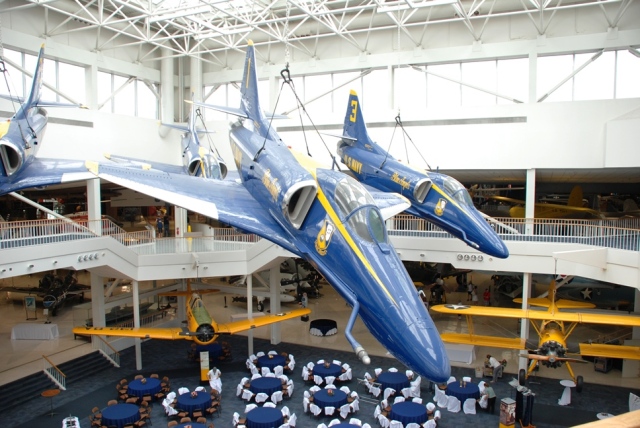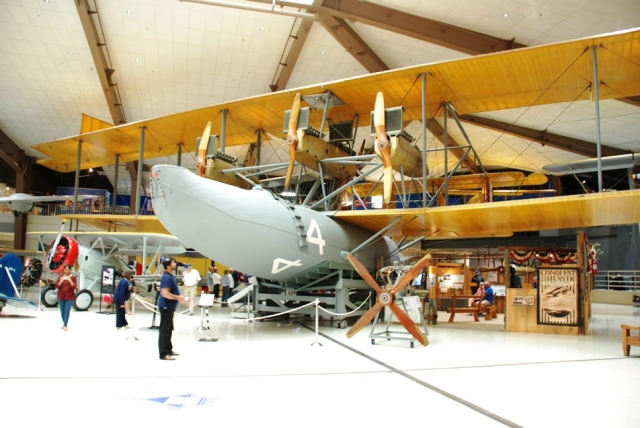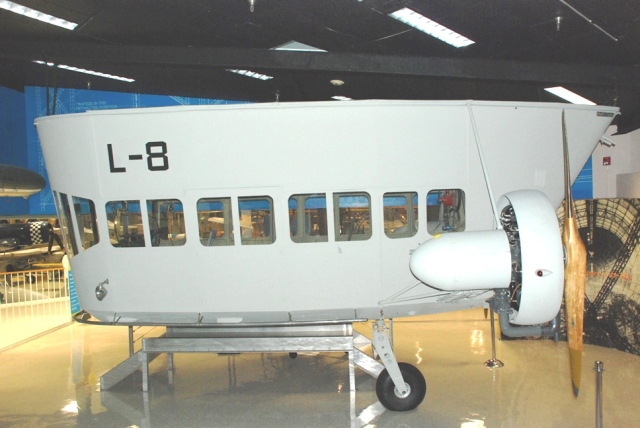Introduction
The beginnings of US naval aviation are somewhat blurred. For example, the first aircraft to take off from, or land on a naval ship were demonstrations in 1910 by civil pilot, Eugene Ely, an employee of Glen Curtiss. On January 27, 1911, Glenn Curtiss made the first seaplane takeoff from San Diego Bay. The next day, Navy Lt “Spuds” Ellyson, a student at the Curtiss School, became the first naval aviator to fly an aircraft.
On 20 January 1914, nine officers, 23 enlisted men, and seven aircraft arrived in Pensacola to establish Naval Air Station Pensacola. The first flight from the new air station occurred February 1914.
Elsewhere, the Naval Aircraft Factory (NAF) was established in Philadelphia (1917). The primary purpose of the NAF was to evaluate aircraft designs and manufacturing techniques and to test designs. The Navy also used it to verify the cost of manufacturing by other aircraft manufacturers. Still, there was no single aviation authority within the Navy.
Finally, in 1921, Congress established the Navy Bureau of Aeronautics (BuAer) under which all naval aviation activities were consolidated. And, as they say, the rest is history, all of which is captured at the National Museum of Naval Aviation, NAS Pensacola.
The Museum
“Take my breath away!”
There is nothing like an iconic aircraft to draw attention—and the Navy F-14 Tomcat certainly is that. The instantly recognizable and impressive “Top Gun” aircraft of movie fame is mounted on a pedestal in front of the Museum.
“Iconic” could easily be overused with regard to Navy aircraft—there are many, including the: F6F Hellcat (destroyed 5,223 enemy aircraft, the most of any fighter in WWII), F4U Corsair (the Black Sheep Squadron aircraft, a personal favorite), A-4 Skyhawk (most naval sorties of any aircraft during Viet Nam (1972-1986), F-4 Phantom (the loudest and toughest), or the F/A-18 Hornet (type in service since 1980—later variants still in production; the Blue Angles aircraft since 1987).
The museum collection includes more than 150 restored aircraft.
The Trolley Ride
Immediately upon entry, the visitor is presented with a grand view of multiple aircraft and ship displays, promising much more to come once inside the main galleries. But before charging into the museum displays, arrange for the trolley tour of the aircraft located outside on the parking ramp behind the museum. Here there are 50 or more aircraft in the process of being restored, too large to display inside, or simply waiting for their next assignment.
“That is not just an exhaust!”
While there is a variety of aircraft on the open ramp, the AJ Savage, built by North American Aviation, is certainly interesting. The AJ was designed to be the first, nuclear-weapons-capable carrier-launched aircraft. Despite the view in the photograph, this is a three-engine aircraft, with a turbojet engine mounted in the tail. The jet, which burned the same fuel as the piston engines, was used for takeoff and when added speed was needed. The aircraft shown, delivered to the Navy in 1953, was removed from Navy inventory in 1960 and served as a fire-fighting aircraft until 1975.

The AJ Savage was the first naval carrier aircraft designed specifically to deliver nuclear weapons.
“More than I had imagined.”
Back at the museum entrance, the close-up experience begins. Visitors have access—walk up and touch—to most aircraft on the museum floor. A few are roped off in dioramas, and many aircraft are suspended from the ceiling. A view from the second floor gallery provides a view of some of the aircraft on display.
Some Notable Highlights
“Smoke…on.”
Before the F/A-18s, the Blue Angels flew the Douglas A-4 Skyhawk, with good reason. Between 1974 and 1986, the A-4 flew more sorties over Viet Nam than any other naval aircraft, mostly in the ground attack role. First flown in 1954, sixty years later some of the nearly 3,000 manufactured are still in service in other countries around the world.

A flight of four A-4 Skyhawk Blue Angels aircraft hang suspended over the museum banquet room. (Amazing to think that this whole formation fits in this room.
“These aren’t just any ‘Black Sheep'”!
As mentioned, the F4U Corsair is a personal favorite, first because of the unique inverted gull wing, and second, because it was a good fighter and ground attack aircraft. The 2100 horsepower engine could pull the Corsair along at more than 440 mph. It was quick and tough. The museum has at least two on display. The one with the wings folded is painted to replicate Pappy Boyington’s Black Sheep aircraft. First built in 1942, production continued through 1953. More than 12,500 Corsairs were produced.

The distinctive inverted gull-wing design not only allowed for a shorter landing gear assembly, it reduce drag at the wing root.
The Corsair’s last dogfights were in 1969, in a war between Honduras and El Salvador, in which a Honduran Corsair shot down three aircraft. This was the last propeller driven aircraft to shoot down an opposing aircraft.
“Achtung!”
Although, certainly not a US Navy aircraft, this captured Messerschmitt ME-262 was sent to the Naval Air Test Center Patuxent River for evaluation. This aircraft was on display at the Delaware Valley Historical Aircraft Association in Willow Grove, Pennsylvania before it was transferred to Pensacola.

The German Me-262 Schwalbe (English: “Swallow) was the first operational jet fighter of World War II.
“We’re going where?!”
The NC-4 Flying Boat, built by the Navy and Curtiss Aeroplane and Motor Company in 1918-1919, is a large seaplane—so large that it is impossible to capture all of it in a single photo in the confines of the museum. The aircraft had four engines. Although, from this view, it looks like a three-engine aircraft, there is a fourth engine mounted behind the center engine configured with a pusher propeller. Three of these aircraft were the first aircraft to attempt to fly across the Atlantic Ocean. The aircraft on display is the only plane to complete that flight, arriving in Lisbon, Portugal in May 1919.

The Navy/Curtiss NC-4 Seaplane was the first aircraft to fly across the Atlantic. It made the flight in several legs
“The ghost ship”
The navy operated a fleet of airships, both blimps and dirigibles. The L-8 was a non-ridged airship (blimp) used for offshore submarine patrol and training in World War II. L-8 was dispatched from California in August 1942 for a routine antisubmarine patrol. After radioing that they were investigating an oil slick, radio contact was lost. L-8 drifted back over the coast south of San Francisco and crashed. There was no sign of the two pilots. Everything in the Control Car appeared to be normal. Exactly what happened to the crew has never been determined.
“Yes, Mr. President.”
The first Avenger was rolled out to during an open house on December 7, 1941, and the torpedo bomber would go on to live up to its name. The TBM had a crew of three: pilot, gunner, and radioman. The most famous TBM Avenger was the one flown by then Lt JG George H. Bush. Although his aircraft had been hit by anti-aircraft fire and his crew killed, he completed a successful bombing attack before ditching the aircraft. Adrift in a life boat, he was soon picked up by a US sub and returned to his squadron where he continued to fly missions. The TBM in the museum is painted in the manner of Bush’s aircraft.

A TBM Avenger similar to and painted like, the one that former President George H. Bush flew in World War II.
“Fly north from here.”
You know you are in a good-sized room when there is a R4D (DC-3) aircraft hanging from the ceiling—in one corner. The military purchased more than 10,000 C-47/R4D variants, while another 600 DC-3s were delivered directly to civil customers. The original DC-3 airframes were designed as the Douglas Sleeper Transport (DST) for American Airlines. There was no prototype DC-3; it was simply the eighth aircraft from the DST production line configured strictly with passenger seats. Introduced in 1936, production of civil DC-3s lasted through 1942; military production continued through the end of World War II (1945). A Super DC-3 was introduced between 1947 and 1950, but it could not compete with the thousands of converted surplus C-47s flowing into civil operations. The aircraft pictured made history when it was the first aircraft to land at the South Pole in 1956. It was equipped with a new radar, skis fitted over the wheels, and JATO (jet assisted-take off) bottles under the belly to assist in taking off from the snow.

A TBM Avenger similar to and painted like, the one that former President George W. Bush flew in World War II.
The R4D and many more aircraft are located in Hangar Bay One, a 55,000 sq. ft. exhibit space largely dedicated to post World War II aircraft and aircraft that recorded special achievements.
My Takeaway
The US Navy has a proud and notable aviation history, playing not only important roles in our nation’s defense, but also in advancing aeronautical technology. The demands of carrier flight operations places unique requirements on aircraft that would not have been developed elsewhere.
This also results in some unique and very different aircraft designs—some more successful than others. Many of these one-of-a-kind aircraft or examples of developmental technologies are on display.
One does not have to be an aviation enthusiast to appreciate the impact of naval aviation on our history, nor marvel at the machines men dared to fly. The museum is staffed by knowledgeable docents, many of whom are retired naval aviators, who can discuss both the aircraft and their roles from first-hand knowledge. Frequently scheduled free guided tours are both informative and entertaining—and a good way to pick up stories and facts not available outside the tours.
There are more than 150 restored aircraft on display, accompanied by thousands of additional artifacts that help tell the story of the naval aviator through the years.
Basic National Museum of Naval Aviation Information
First, there is no better deal: free admission, free parking, and free tours.
The museum is open daily from 9 am to 5 pm all year except on Thanksgiving, Christmas and New Year’s days.
The Cubi Bar Café offers an excellent selection of sandwiches and meals, usually with daily specials. There is an IMAX® Theater with a changing selection of movies, and, of course, there is a Museum Store with a wide selection of books, models, toys, clothing, and souvenirs.
Note: During the Blue Angels air show season, it is possible to see their weekly routine practices from the museum parking lot on Tuesdays and Wednesdays
.
The museum is located on Naval Air Station Pensacola at 1750 Radford Blvd, Pensacola, FL 32506
(850) 452-3604
For More Information: http://www.navalaviationmuseum.org/
About Entry
The beginnings of US naval aviation are somewhat blurred, but from the first naval aviator to the 100th Anniversary of Naval Air Station Pensacola, the history is captured in the National Museum of Naval Aviation.
Contents Entry
The National Museum of Naval Aviation captures–and displays–more than 100 years of US naval history.





Pingback: Renaissance Musings Table of Contents | Renaissance Musings
L-8 interior control car
i need detail of interior L-8 control car/gondola for my model 1/72 ,thank you